Jan 16, 2018 4:38pm
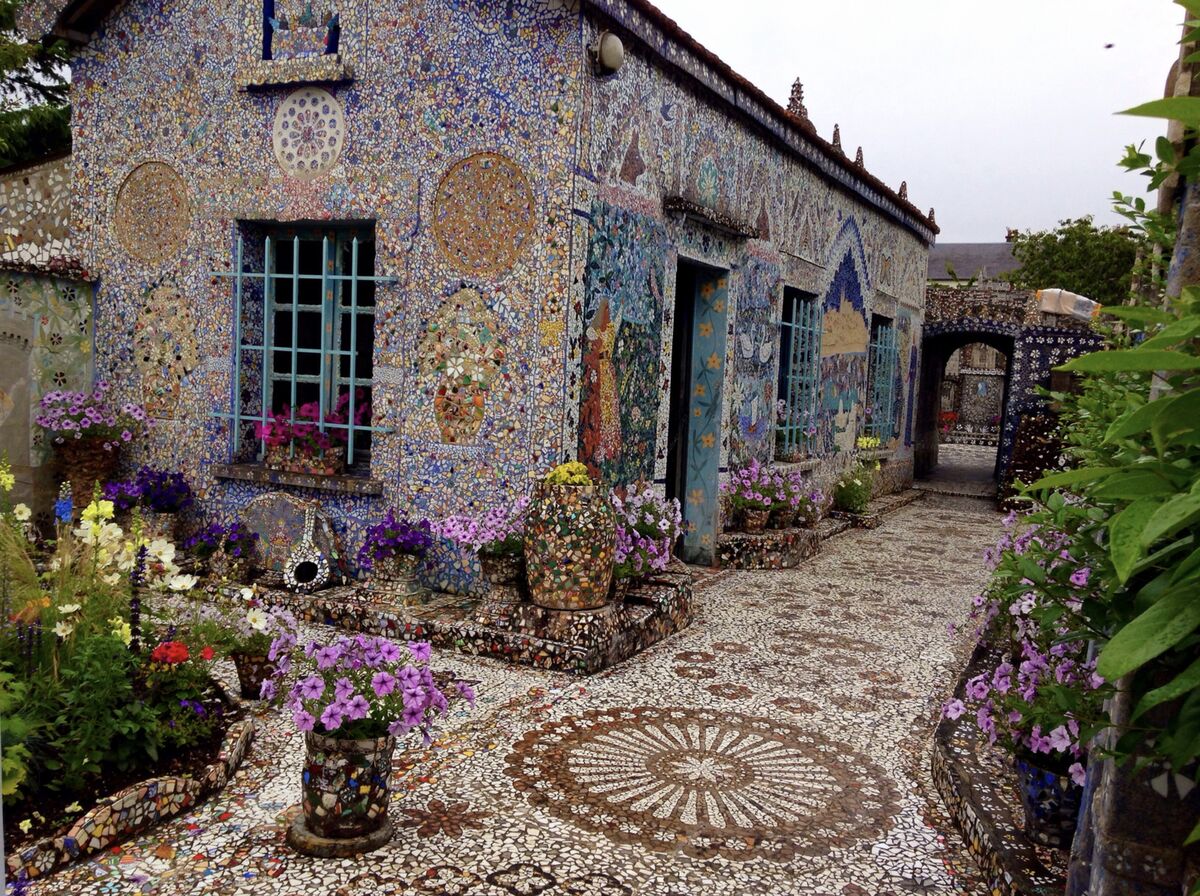
Photo by Michael P Chang, MD, via Flickr.
Raymond Isidore didn’t plan on becoming an artist—let alone a sculptor who would go on to cover nearly every surface of his small home with glittering mosaics. But after a fateful stroll in 1938, when a shiny piece of broken crockery caught his eye, Isidore devoted the majority of the remainder of his life on the outskirts of Chartres, France, to the creation of one of the world’s most unique homes—an ecstatic expression of the untrained artist’s bursting imagination.
Isidore was born into a humble family in Chartres in 1900, and as a young man landed a position as the caretaker of a local cemetery. By all accounts, he led a provincial life; he married a woman roughly 10 years his senior and bought a humble plot of land not far from the famed Chartres Cathedral. There, Isidore built what began as a simple cottage, but soon transformed into his masterwork, known as La Maison Picassiette, which still stands and is accessible to the public today.

Photo by @little_miaow, via Instagram.
With the passion and discerning eye of a new collector, Isidore began his project by pocketing all of the broken bits of pottery and glass he could find. His sources were the fields and trash repositories around his home; he believed that “what people disdain and reject in quarries and dumps can still serve,” he once explained of his growing cache of discards.
At first, he had no objective other than to keep the eye-catching shards. “I picked them up without any specific intention, for their colors and their flicker,” he later recalled. “I sorted the good, [discarded] the bad. I piled them up in a corner of my garden.”
It was a dream that came to him one night that encouraged the middle-aged man to reconstitute his pile of fragments into something new, he later told journalist Robert Giraud. “The night dictated what I had to do,” he recalled. “I saw my motive before me as if it really existed.…Pieces of porcelain or faience were within reach, ready to use.”
The mosaics that resulted surprised even their creator: “I, who have never known how to draw in my life, I do not understand how, yet I arrived at such a result,” he continued.
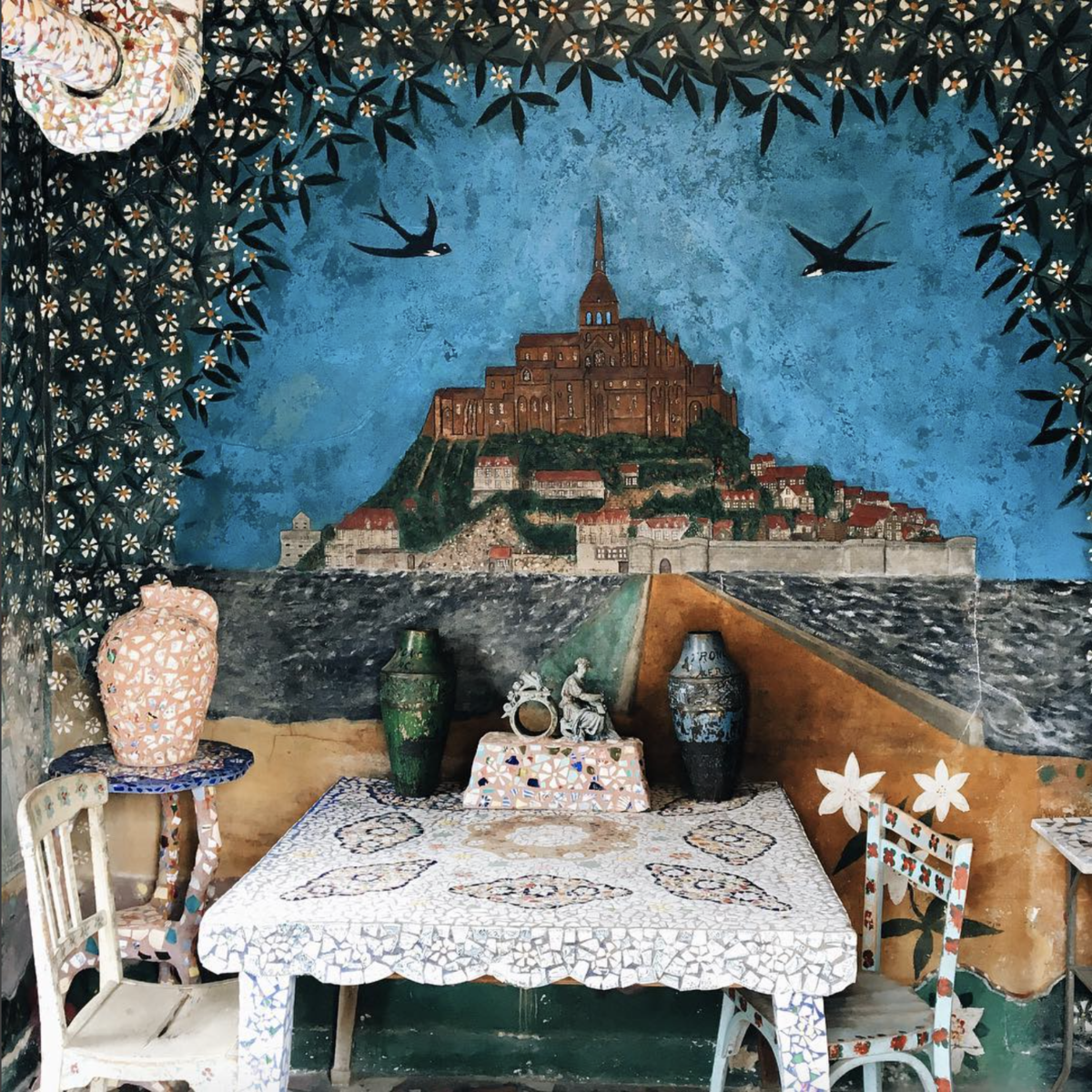
Photo by @passionchateau, via Instagram.
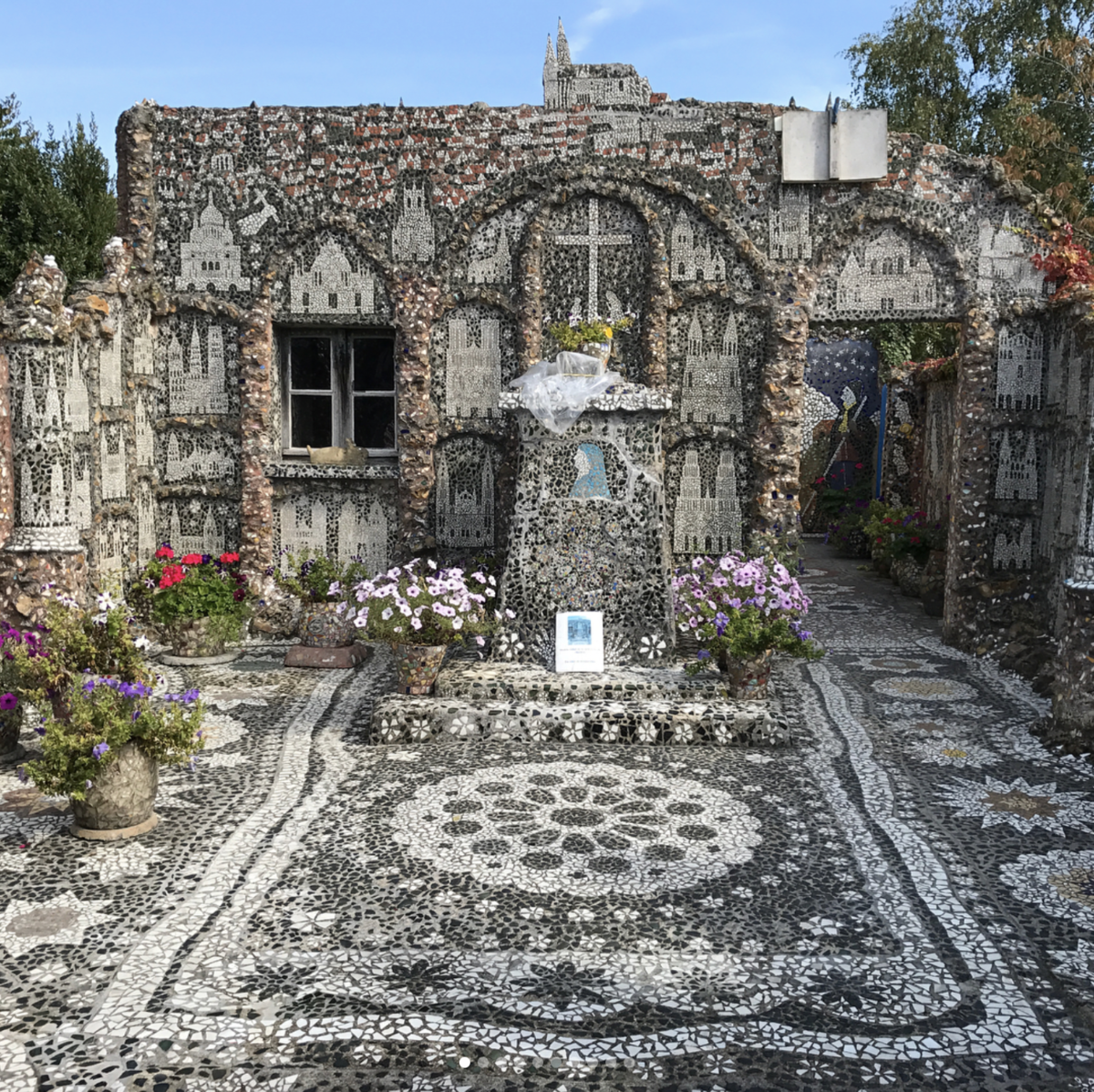
Photo by @guetteururbain, via Instagram.
Isidore first set to work on the interior walls of his house, often covering them with intricate patterns of flowers and birds, created from ragged ceramic pieces in a multitude of colors. Surfaces not swathed in tile creations were painted with flora and fauna or sun-bathed vistas. One fresco, like a trompe l’oeil window into paradise, shows an island topped with palace-cum-cathedral. The landmass is surrounded by careening swallows and a calm sea.
After he’d filled the walls with mosaic, he moved to the ceilings, floors, and even furniture: from the kitchen table and bed, to a sewing machine and side chair. Every corner and object—even the most minute—became encased in ceramic and glass collage or painted patterns, all depicting the most joyous, colorful aspects of nature, everyday life, and biblical scenes. Then, he moved on to the exterior.
As Isidore's his creation grew, some say that he became known by cynical neighbors as Picassiette—a term that’s been interpreted as a derisive portmanteau, joining pique (or steal) with assiette (or plate). But this teasing didn’t deter Isidore from continuing his work, and as his mosaics began to spread across the facade of his house, skepticism turned to awe. The cottage began to shimmer with swans, ships, bees, bursting floral arrangements, and an impressive depiction of the Chartres Cathedral, all pieced together from kaleidoscopic pieces of pottery.

Photo by @aarchange66, via Instagram.
By 1960, word of La Maison Picassiette had spread as far as the United States. In December of that year, the magazine Popular Mechanics ran a story headlined “Mosaic House” on Isidore’s life’s work. In one photo that accompanied the article, he wears a beret while creating a butterfly from bits of glass. By that point, he’d been building upon his mosaic for over two decades—it decorated not only the exterior of the Isidore homestead, but also the property’s gates, pathways, and gardens.
He even built additional structures on the property—including a chapel and what he called his summer house—so that he could blanket them, too. These structures boast the most tantalizing and detailed surfaces of La Maison Picassiette. In the chapel, garlands of leaves and abstract patterns surround a large cross dotted with rosebuds and a nativity scene. The west wall shows a secular scene depicting the countryside, where a woman, a shepherd, a dog, chickens, rabbits, and plows mingle.
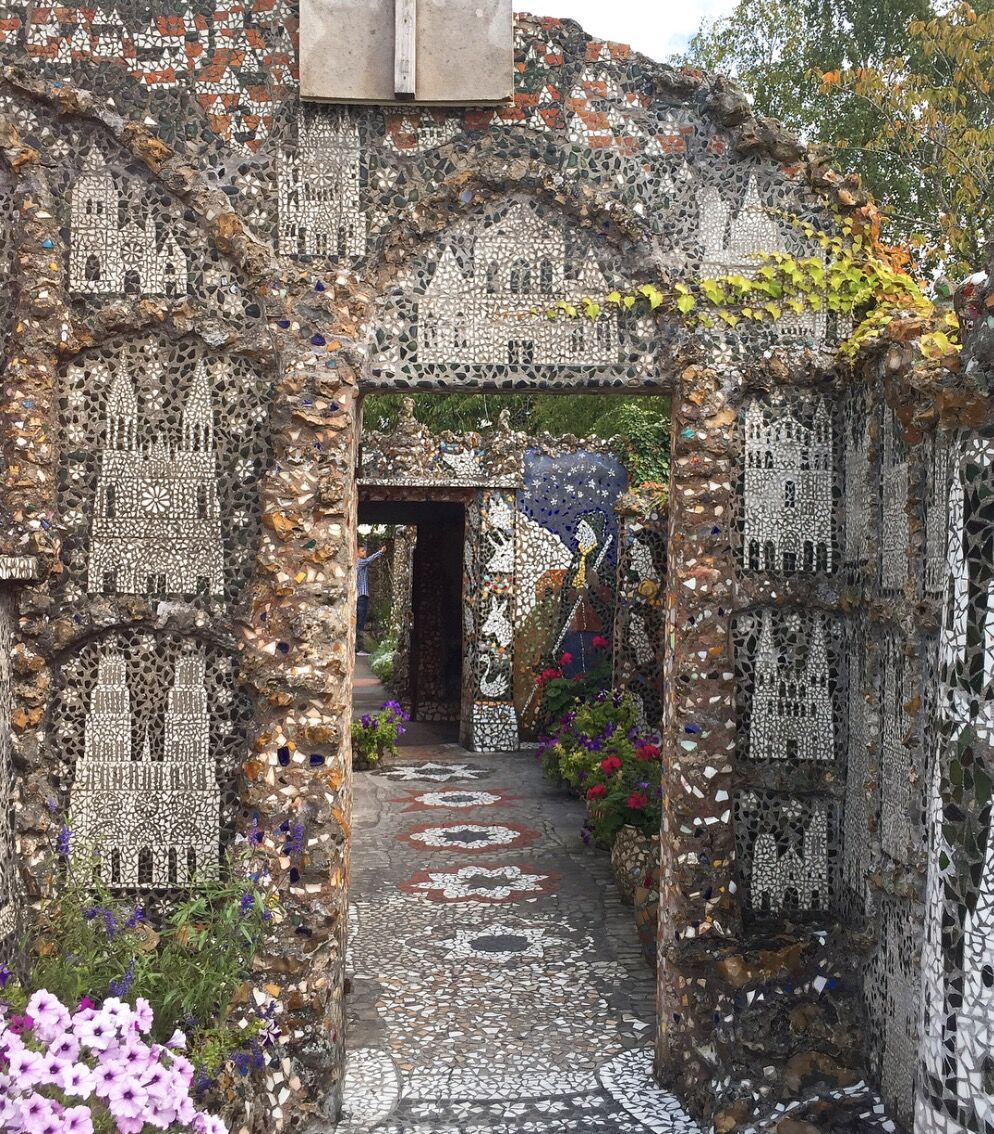
Photo by @sugyung.suzanne, via Instagram.
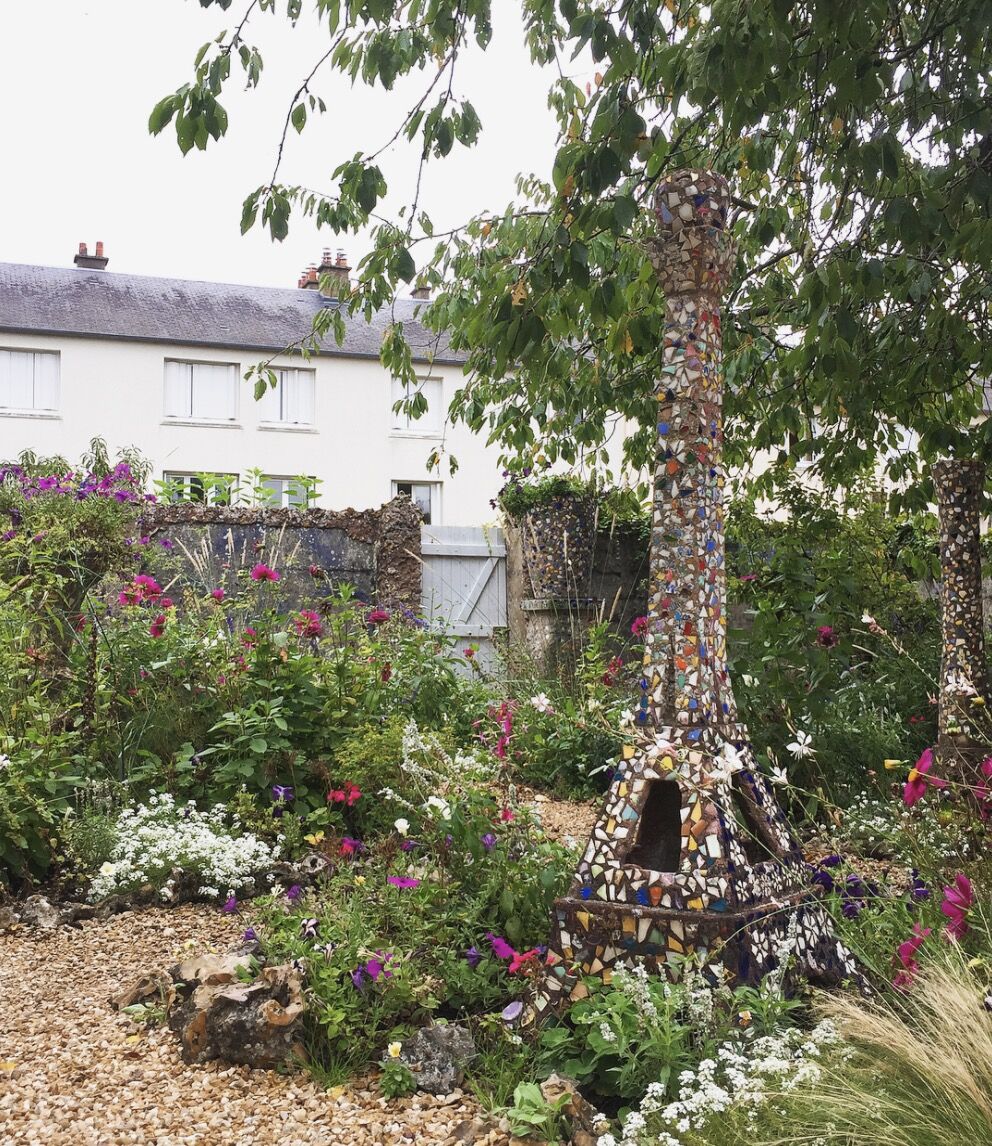
Photo by @sugyung.suzanne, via Instagram.
The summer house, on the other hand, became a canvas for mosaiced murals representing whole cities and some of the world’s greatest buildings. One wall bordering the structure, part of what is known as the black courtyard, is covered primarily in shards of black glass and white china. These bits come together to depict cathedrals and other places of worship copied from postcards and Isidore’s own surroundings. On another exterior surface of the building, a frieze depicting Jerusalem makes way for a sea of famous structures, like the Leaning Tower of Pisa and the Colosseum. At the base of this elaborate fresco, Isidore placed a throne: This is where he would sit and admire his creation.
By the end of his life, in 1964, Isidore had acquired another nickname, too: Picasso Assiette. The name was fitting in part because
Pablo Picasso
himself visited La Maison Picassiette in 1954. But the title also recognized the Isidore’s unbridled creativity, which fueled him to forge a shimmering paradise from bits of pottery.
Alexxa Gotthardt is a contributing writer for Artsy.
No comments:
Post a Comment